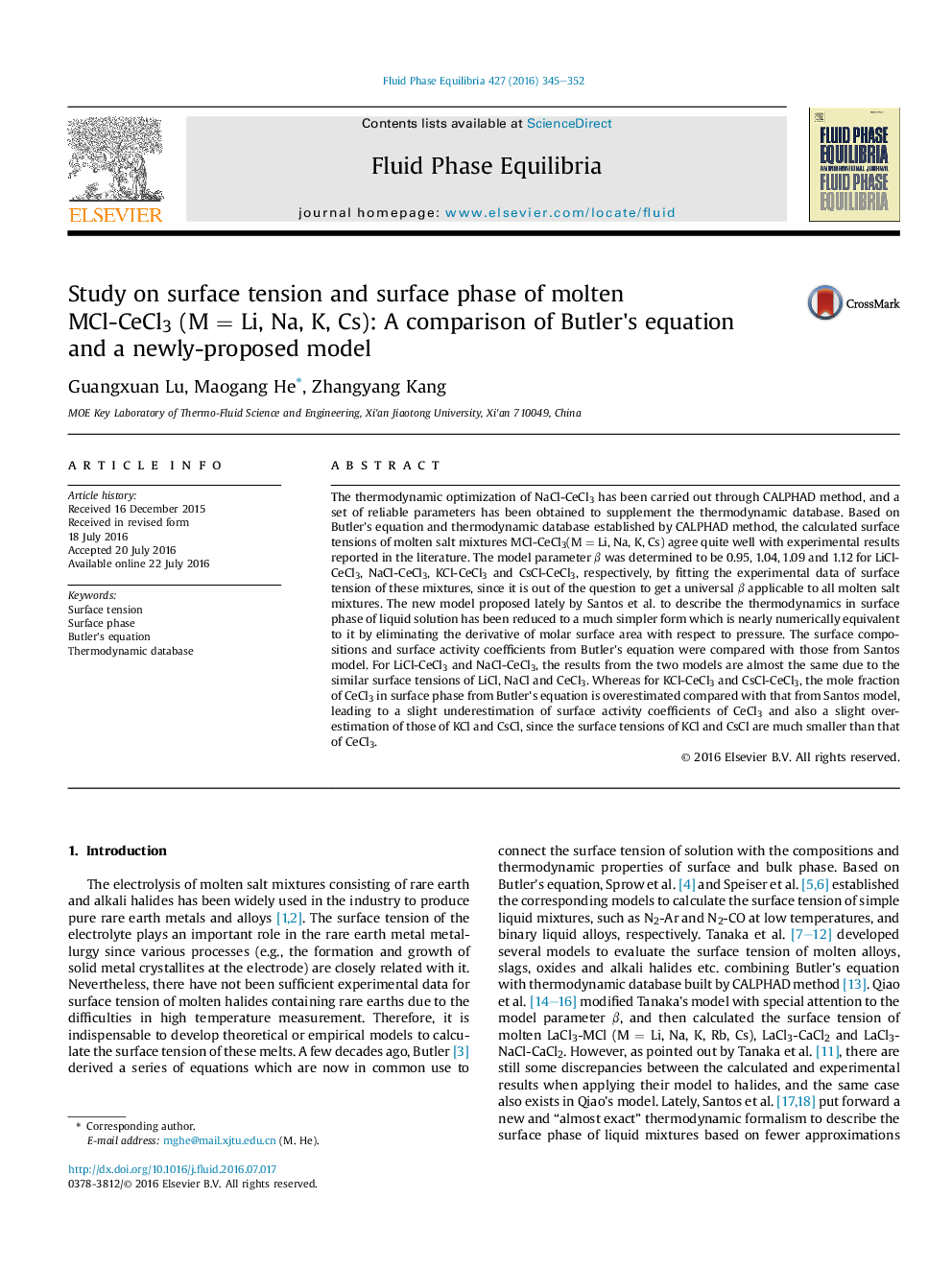| Article ID | Journal | Published Year | Pages | File Type |
|---|---|---|---|---|
| 6619423 | Fluid Phase Equilibria | 2016 | 8 Pages |
Abstract
The thermodynamic optimization of NaCl-CeCl3 has been carried out through CALPHAD method, and a set of reliable parameters has been obtained to supplement the thermodynamic database. Based on Butler's equation and thermodynamic database established by CALPHAD method, the calculated surface tensions of molten salt mixtures MCl-CeCl3(M = Li, Na, K, Cs) agree quite well with experimental results reported in the literature. The model parameter β was determined to be 0.95, 1.04, 1.09 and 1.12 for LiCl-CeCl3, NaCl-CeCl3, KCl-CeCl3 and CsCl-CeCl3, respectively, by fitting the experimental data of surface tension of these mixtures, since it is out of the question to get a universal β applicable to all molten salt mixtures. The new model proposed lately by Santos et al. to describe the thermodynamics in surface phase of liquid solution has been reduced to a much simpler form which is nearly numerically equivalent to it by eliminating the derivative of molar surface area with respect to pressure. The surface compositions and surface activity coefficients from Butler's equation were compared with those from Santos model. For LiCl-CeCl3 and NaCl-CeCl3, the results from the two models are almost the same due to the similar surface tensions of LiCl, NaCl and CeCl3. Whereas for KCl-CeCl3 and CsCl-CeCl3, the mole fraction of CeCl3 in surface phase from Butler's equation is overestimated compared with that from Santos model, leading to a slight underestimation of surface activity coefficients of CeCl3 and also a slight overestimation of those of KCl and CsCl, since the surface tensions of KCl and CsCl are much smaller than that of CeCl3.
Related Topics
Physical Sciences and Engineering
Chemical Engineering
Chemical Engineering (General)
Authors
Guangxuan Lu, Maogang He, Zhangyang Kang,
